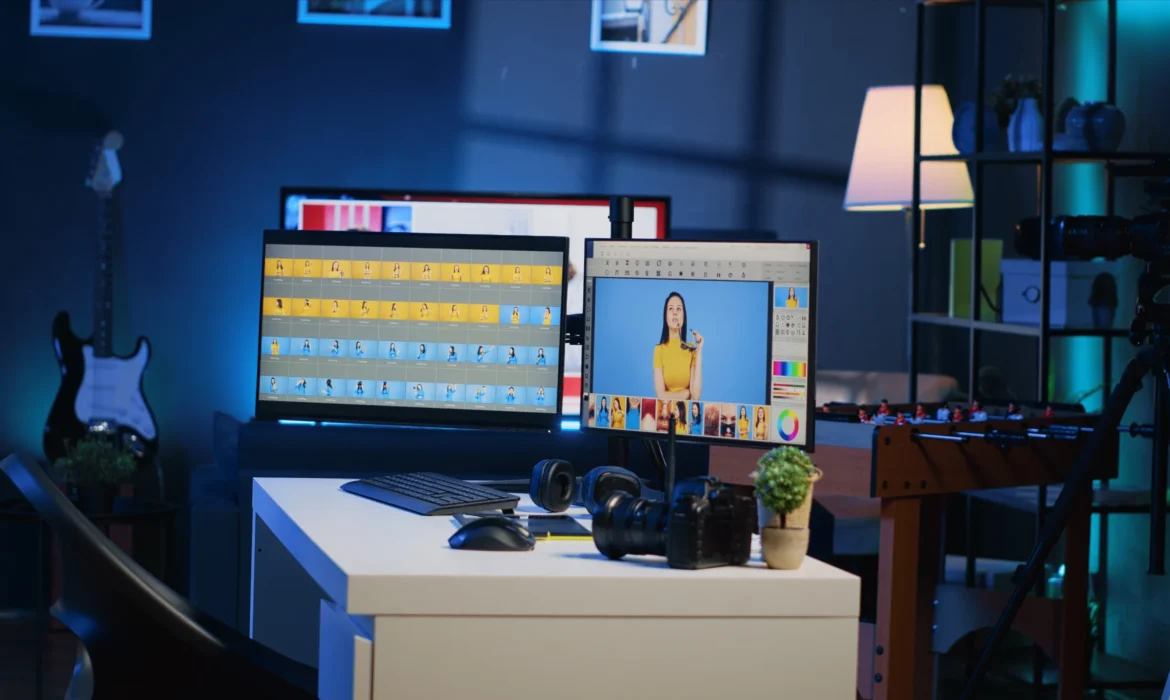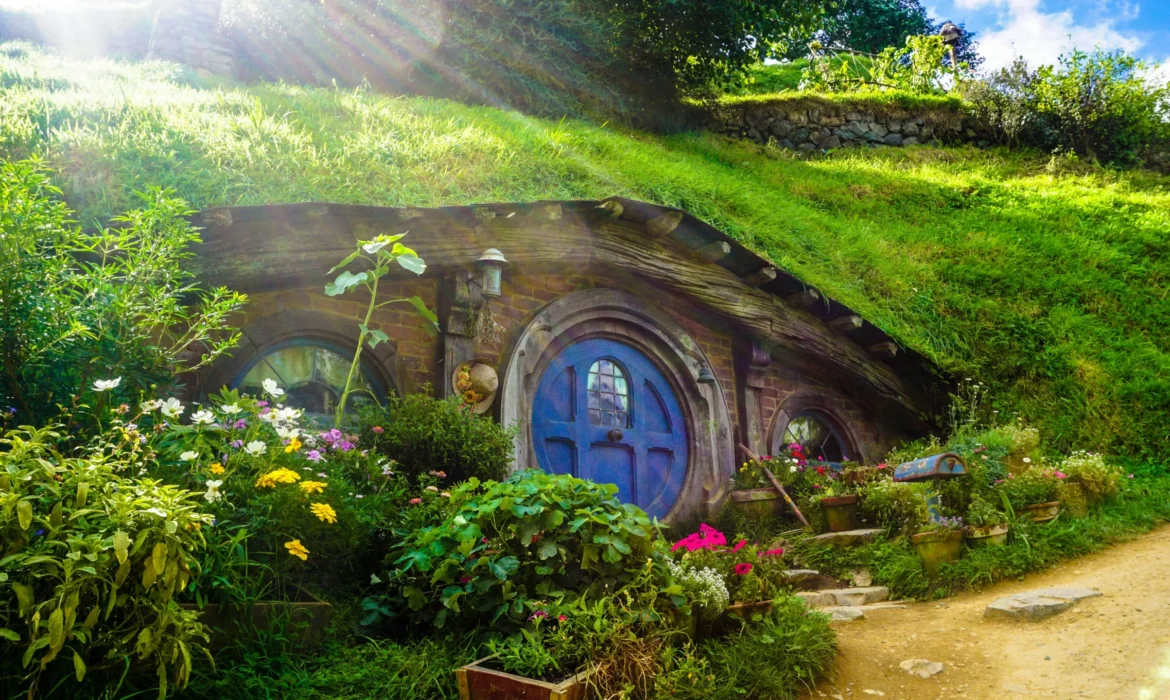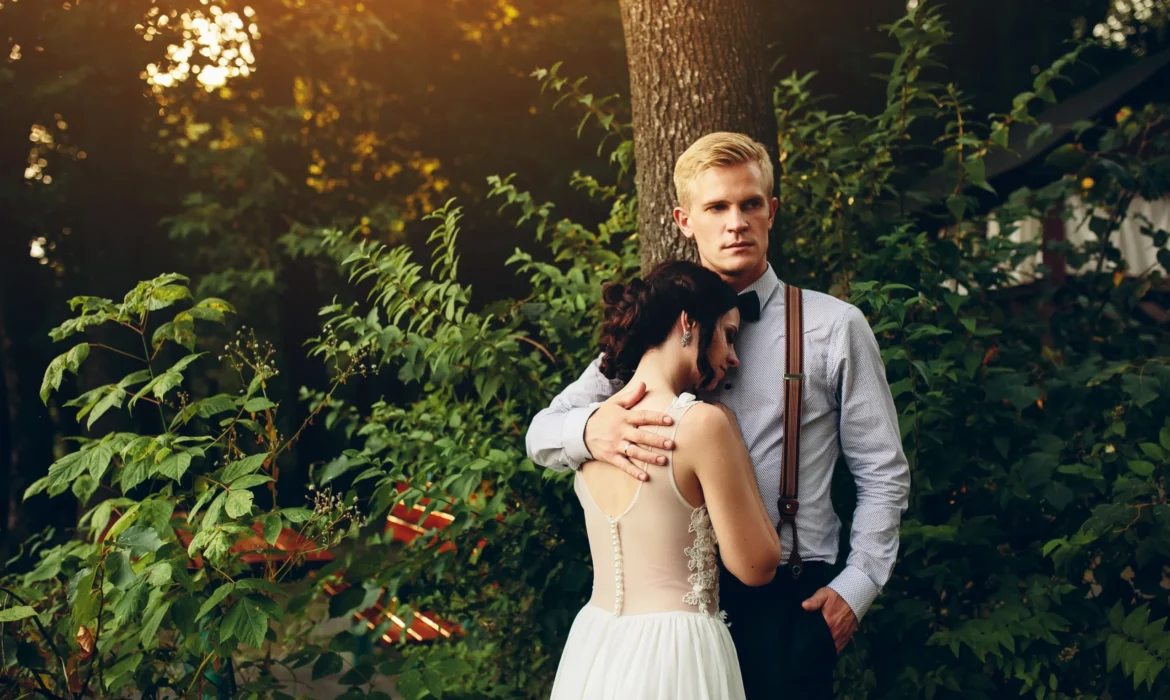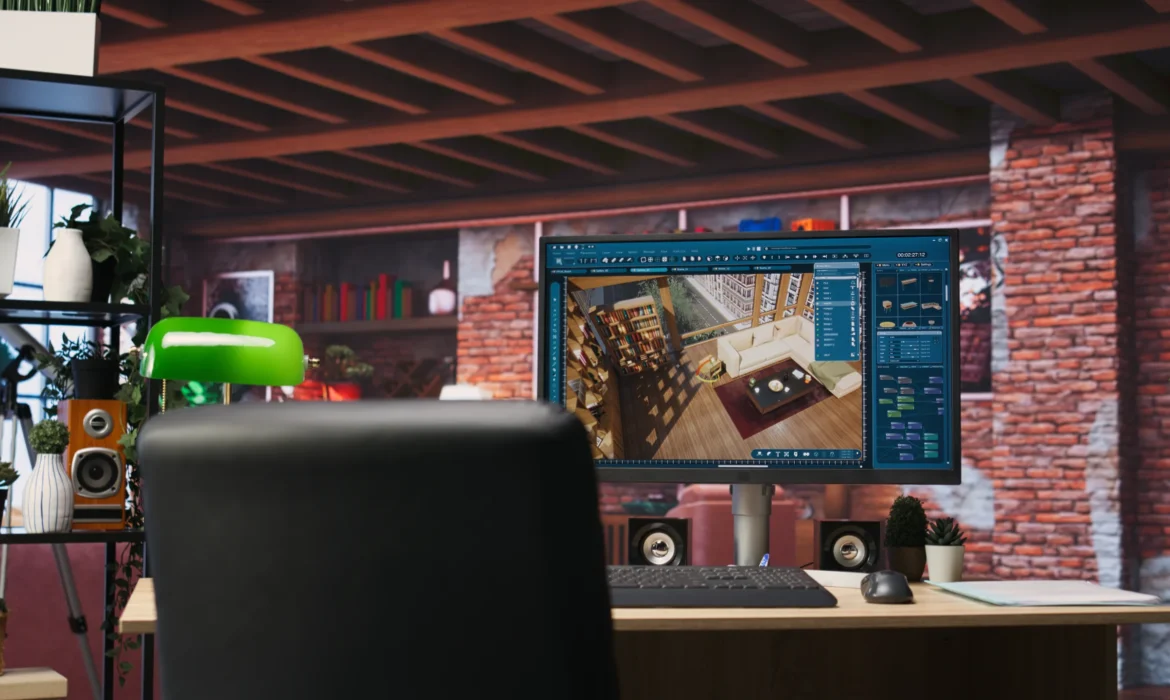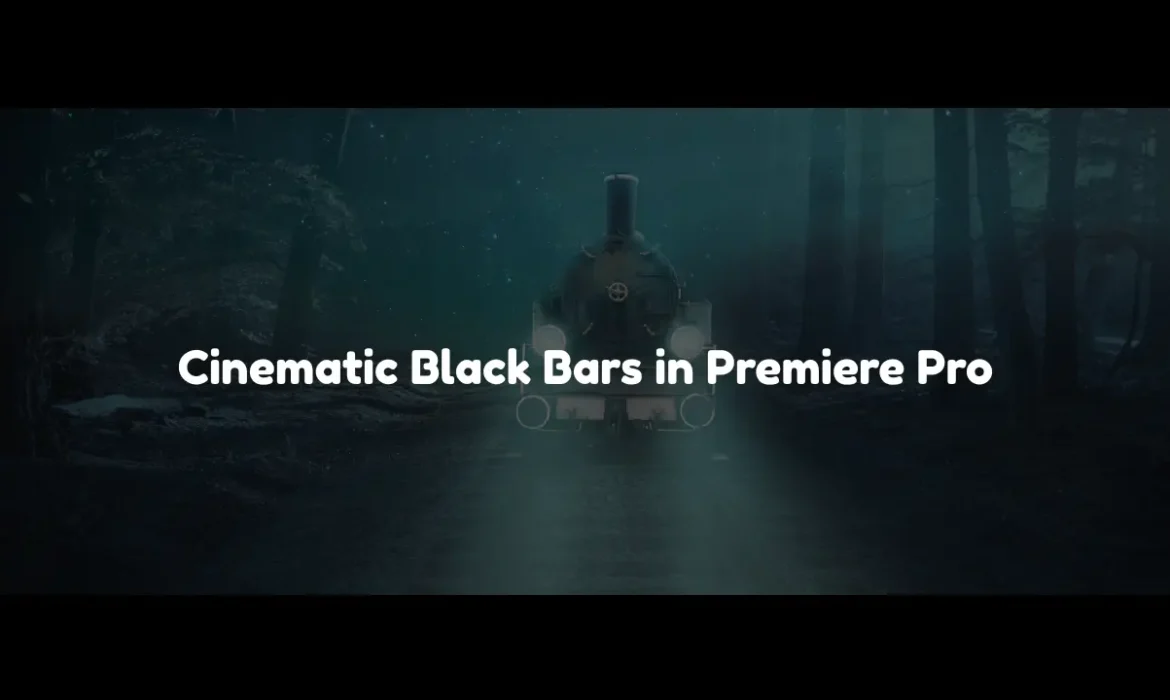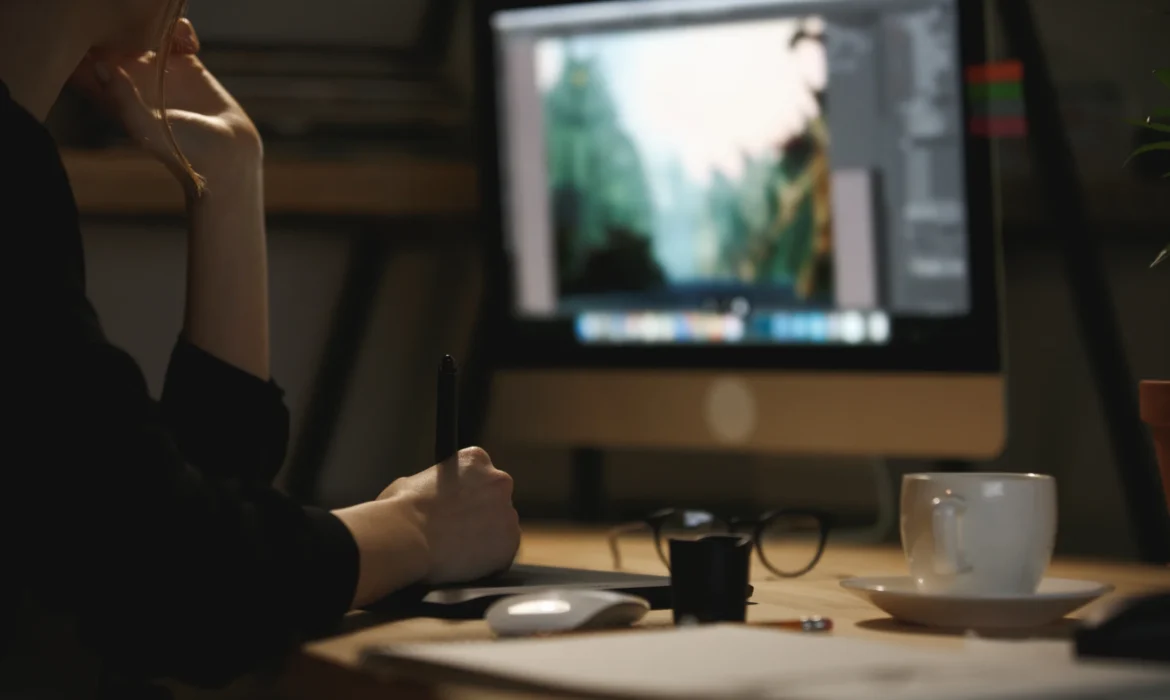Minimum System Requirements for Adobe Premiere Pro: What You Need to Run It Smoothly
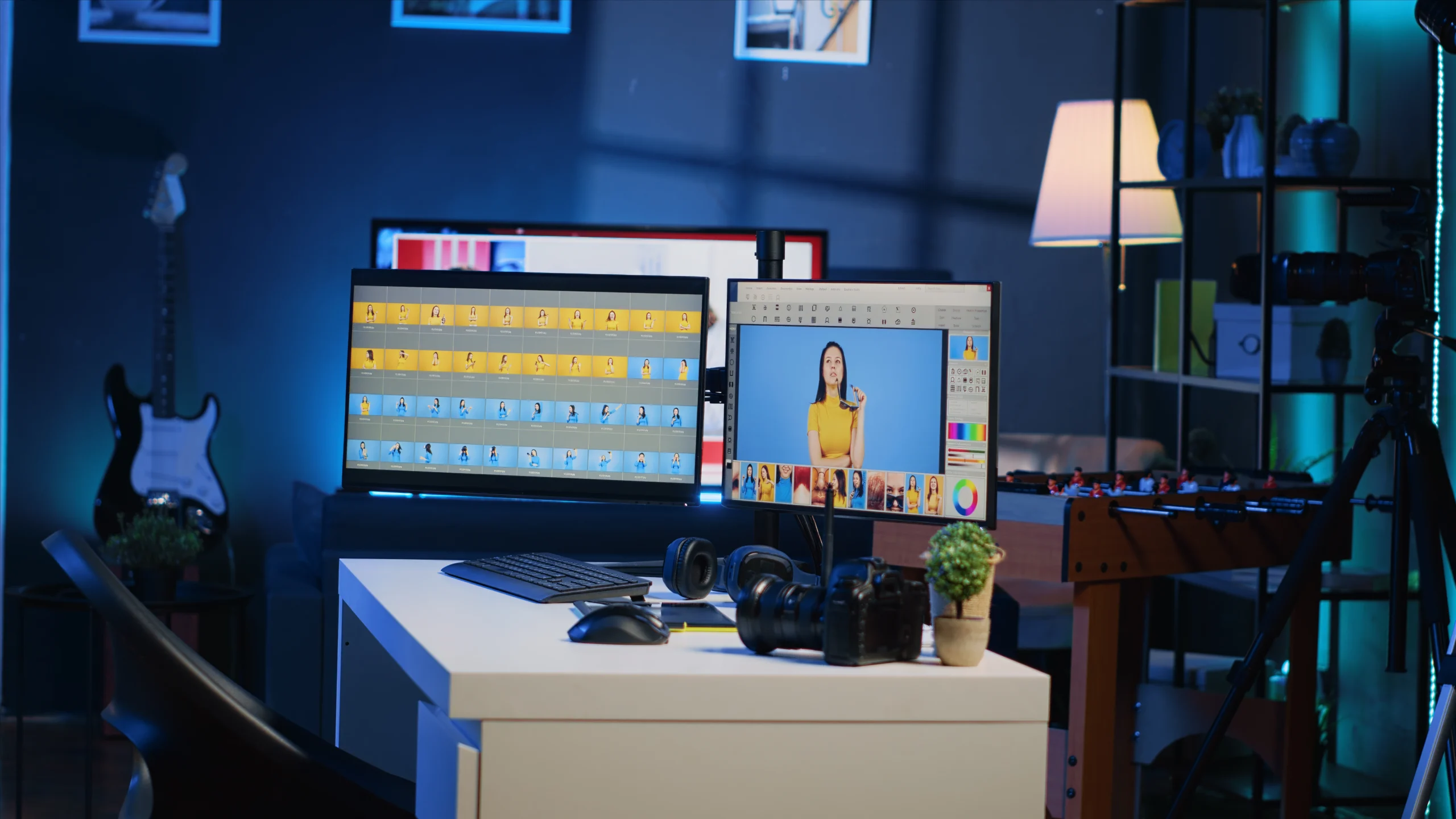
Minimum System Requirements for Adobe Premiere Pro: What You Need to Run It Smoothly
Introduction
Adobe Premiere Pro system requirements are essential to understand if you want to run this industry-leading video editing application smoothly. Favored by professionals worldwide, Adobe Premiere Pro demands a capable system to ensure efficient video editing workflows. This extensive guide covers every aspect of Premiere Pro’s requirements, offering detailed insights into optimizing your workstation for the best editing experience possible.
Understanding Adobe Premiere Pro
Premiere Pro is a robust, resource-intensive video editing software that handles everything from simple cuts to complex visual effects and professional-grade color grading. Given its extensive capabilities, having a well-equipped computer system is paramount.
Official Minimum System Requirements
According to Adobe, the minimum specifications include:
- Processor: Intel® 6th Gen or newer CPU – or AMD equivalent
- Operating System: Windows 10 (64-bit), macOS 10.15 (Catalina) or later
- RAM: 8 GB minimum (16 GB recommended)
- GPU: 2 GB GPU VRAM, GPU supporting OpenCL or CUDA
- Storage: 8 GB available hard-disk space for installation, additional space required for media
- Monitor Resolution: 1280 x 800 (1920 x 1080 recommended)
Recommended System Requirements for Optimal Performance
To experience optimal performance and avoid workflow interruptions, Adobe recommends:
- Processor: Intel 7th Generation or newer (or AMD Ryzen equivalent)
- RAM: 32 GB or more
- GPU: 4 GB VRAM or more
- Storage: Fast SSD drives for software and media
- Monitor Resolution: 1920 x 1080 or higher
Detailed Breakdown of System Components
Processors (CPU)
Video editing heavily relies on CPU power. Premiere Pro works best with multi-core processors such as:
- Intel Core i7, i9 or Xeon
- AMD Ryzen 7, Ryzen 9, Threadripper
Memory (RAM)
RAM directly impacts Premiere Pro’s ability to process real-time previews, multitasking, and rendering speeds.
- Minimum recommended: 16 GB
- Optimal performance: 32 GB or higher
Graphics Processing Unit (GPU)
A powerful GPU accelerates rendering effects and transitions significantly:
- NVIDIA GTX, RTX, or Quadro GPUs
- AMD Radeon Pro series
Storage Solutions
High-speed storage dramatically improves workflow efficiency:
- SSD drives for operating system and software
- Separate SSD or NVMe drives for project files and media caches
Monitor and Display
Accurate colors and sufficient workspace enhance editing precision:
Recommended: IPS panels, high-resolution displays (4K)

We Can Help You With Professional Video Editing.
Unlimited Revisions – Whatever changes are needed, send them through and we will Fix them.
Fast Turnaround Time – We are always available to meet the tightest of deadlines when necessary.
Risk-Free Trial – Send your first video editing project to us and if you are not 100% happy with the results we produce, you don’t pay!
Optimizing Premiere Pro Performance
To maximize Premiere Pro’s performance:
- Regularly update software and drivers
- Clear media cache periodically
- Use proxies for high-resolution footage
- Manage active processes and allocate sufficient resources
Common Issues and Troubleshooting
Addressing frequent Premiere Pro performance issues:
- Lagging playback: Upgrade GPU or increase RAM
- Slow export times: Optimize CPU and GPU combination
- Crashes/freezes: Regularly update Premiere Pro, GPU drivers, and operating systems
System Requirements for 4K, 6K, and 8K Editing
Higher resolutions demand greater resources:
- 4K Editing: Minimum 32 GB RAM, high-end GPU (4 GB+ VRAM)
- 6K/8K Editing: 64 GB RAM or higher, professional GPU solutions (RTX series, AMD Radeon Pro)
Benefits of Outsourcing Premiere Pro Editing
Outsourcing intensive editing tasks can significantly enhance workflow efficiency. Companies like Cut Pro Media offer:
- Professional editing expertise
- Quick turnaround
- Cost-effective scalability
Testimonials & Case Studies
Professional editors highlight Cut Pro Media’s advantages:
- “Cut Pro Media’s skilled editors handle complex projects seamlessly, letting me focus on capturing more content.” – Martin, Videographer
- “Thanks to outsourcing, we reduced our project delivery times dramatically, boosting client satisfaction.” – Claire, Professional Videographer
Frequently Asked Questions (FAQs)
- Is a dedicated GPU necessary for Premiere Pro?
Yes, GPU significantly enhances performance, especially for rendering and playback. - Does Premiere Pro run better on Mac or Windows?
Premiere Pro performs equally well on both, given equivalent hardware specs. - Can I edit videos smoothly with the minimum requirements?
For basic edits, yes, but performance improves substantially with higher specifications.
Conclusion
Meeting and exceeding Premiere Pro’s system requirements ensures efficient workflows and optimal video editing performance. Consider enhancing your editing capabilities further by outsourcing intensive editing tasks to Cut Pro Media, where professional editors provide consistent, top-quality results. Optimize your editing workflow today and elevate your video production standards with Cut Pro Media.
Wedding Video Ideas & Pro Editing Tips: Workstation Setup to Transitions
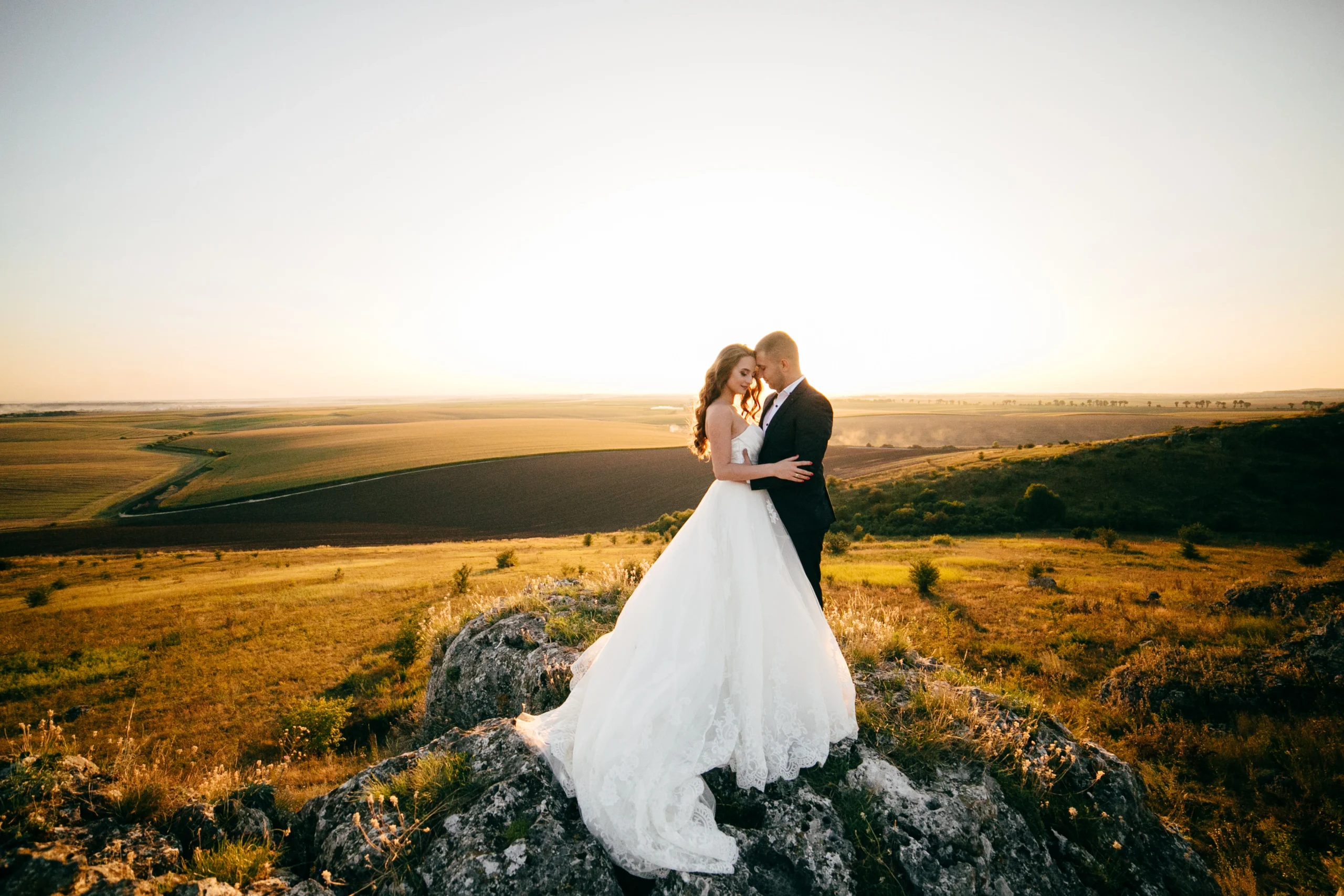
Wedding Video Ideas & Pro Editing Tips: Workstation Setup to Transitions
Introduction
Creating exceptional wedding videos involves much more than filming beautiful moments—it requires careful planning, inspired creativity, and meticulous post-production skills. This guide offers innovative wedding video ideas and essential professional editing tips, from setting up your editing workstation to mastering seamless transitions, helping videographers produce captivating, memorable films.
Inspirational Wedding Video Ideas
Story-Driven Videos
Capture and highlight the couple’s unique love story through carefully scripted narratives, voiceovers, or interviews integrated into the wedding video.
Cinematic Highlights
Utilize cinematic filming techniques such as drone shots, slow-motion footage, and dramatic lighting to create visually stunning highlight reels.
Documentary-Style Films
Present the wedding day in a natural, candid manner, capturing genuine emotions, interactions, and spontaneous moments without excessive staging.
Creative Themes
Incorporate distinctive themes such as vintage, rustic, fantasy, or seasonal motifs to personalize the wedding video experience.
Professional Editing Tips
Optimizing Your Editing Workstation
- Desk Setup: Ergonomic furniture and proper lighting to ensure comfort during prolonged editing sessions.
- Hardware Essentials: High-resolution monitors, powerful computers, SSD storage solutions, professional-grade audio equipment.
Software Preferences: Adobe Premiere Pro, Final Cut Pro, DaVinci Resolve for professional-grade editing capabilities.
Footage Organization
- Establish clear project folders and naming conventions.
- Utilize metadata tagging and timeline markers for efficient editing.
- Regularly back up projects to prevent data loss.

We Can Help You With Professional Video Editing.
Unlimited Revisions – Whatever changes are needed, send them through and we will Fix them.
Fast Turnaround Time – We are always available to meet the tightest of deadlines when necessary.
Risk-Free Trial – Send your first video editing project to us and if you are not 100% happy with the results we produce, you don’t pay!
Essential Editing Techniques
Color Grading
Master color grading to enhance visual storytelling, ensuring consistent tones and moods aligned with the wedding’s theme.
Audio Mixing
Prioritize clear dialogue, ambient sound, and well-chosen music tracks to support emotional engagement.
Smooth Transitions
- Match Cuts: Align similar movements or visual elements to create seamless transitions.
- Creative Transitions: Use masking, wipes, or dissolves for artistic transitions.
- Timing: Align transitions with music beats or narrative pacing for enhanced emotional impact.
Common Challenges & Solutions
- Challenge: Managing large amounts of footage efficiently.
- Solution: Adopt systematic organization and categorization techniques.
- Solution: Adopt systematic organization and categorization techniques.
- Challenge: Achieving consistent visual style across multiple projects.
- Solution: Create and apply standardized editing presets and templates.
- Solution: Create and apply standardized editing presets and templates.
Benefits of Professional Outsourcing
Consider outsourcing your editing to gain numerous advantages:
- Time Savings: Focus on shooting and business growth.
- Quality Assurance: Professional editors provide consistently high standards.
- Scalable Solutions: Manage increased demand without compromising quality.
How Cut Pro Media Enhances Wedding Videography
Cut Pro Media specializes in outsourced wedding video editing, offering services that ensure:
- Expert-level storytelling.
- Quick turnaround times.
- Seamless workflow integration.
Client Testimonials
Hear directly from satisfied clients:
- “Cut Pro Media has transformed our video production, delivering consistently stunning edits that delight every couple.” – Jennifer, Wedding Videographer
- “Outsourcing our editing allowed us to double our bookings in just one season without sacrificing quality.” – Alex, Professional Wedding Videographer
Frequently Asked Questions (FAQs)
- What equipment is essential for professional wedding video editing?
High-resolution monitors, fast computers, SSD storage, professional audio gear. - How can transitions enhance wedding videos?
Transitions improve storytelling flow, emotional engagement, and visual appeal. - Why outsource wedding video editing?
Outsourcing improves productivity, cost-efficiency, and maintains high-quality standards.
Conclusion
With inspired ideas and pro editing tips, your wedding videos will reach new heights of creativity and professionalism. To further enhance your efficiency and quality, partner with Cut Pro Media, your trusted expert in wedding video post-production. Elevate your videography business today by outsourcing your editing and focusing on what you do best—capturing unforgettable moments.
Why Do Movies Have Black Bars? Explained in English, Spanish, German & More
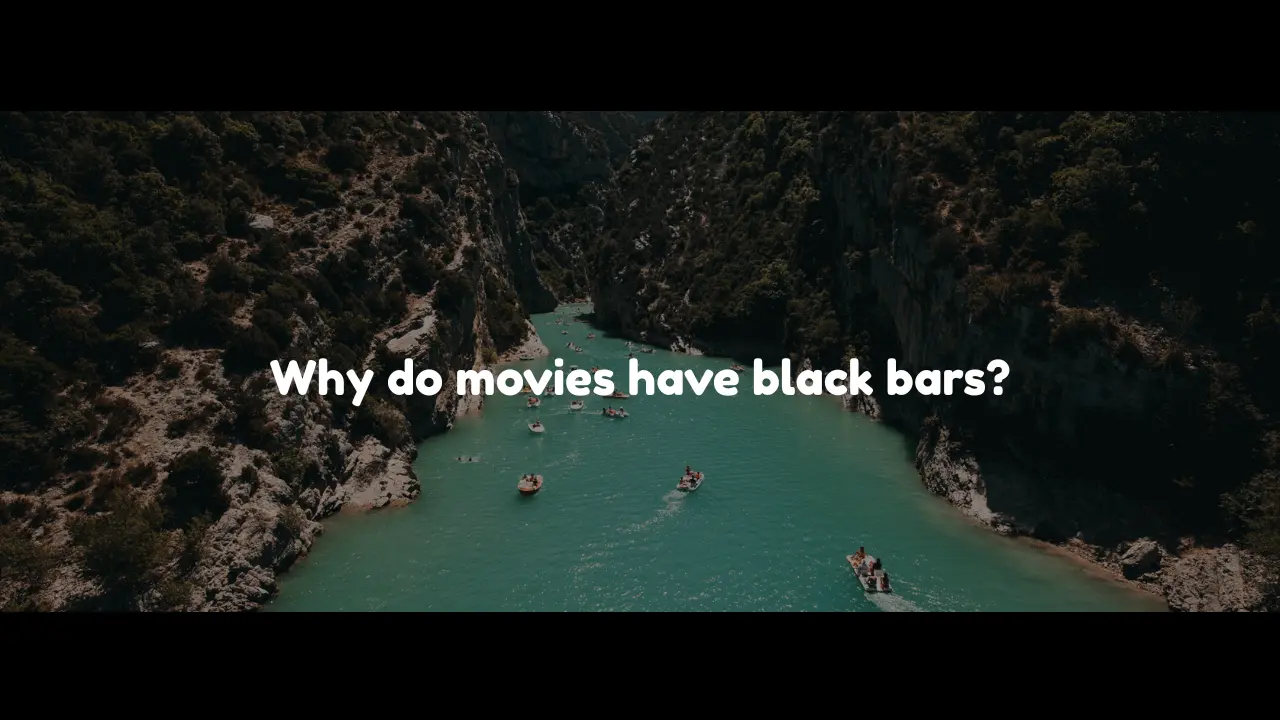
Why Do Movies Have Black Bars? Explained in English, Spanish, German & More
Introduction
You’ve probably noticed that many films display prominent black bars at the top and bottom of the screen. Known as letterboxing, these black bars often raise questions among viewers regarding their purpose and necessity. This comprehensive guide, explained clearly in English, Spanish, German, and other languages, reveals the technical, artistic, and historical reasons behind the presence of black bars in movies.
Understanding Cinematic Black Bars
What Are Black Bars?
Black bars, commonly known as letterboxing, are horizontal stripes appearing at the top and bottom of your screen, especially noticeable when viewing widescreen movies. These bars result from displaying content filmed in aspect ratios different from your television or monitor’s default ratio.
Historical Context
Historically, movies were originally presented in a 4:3 aspect ratio. With cinema’s evolution, filmmakers shifted towards wider aspect ratios like 16:9, 1.85:1, and 2.35:1 to enhance cinematic storytelling, leading to the necessity of letterboxing for home viewing.
Technical Explanation
Modern TVs typically use a 16:9 aspect ratio. When films shot in wider formats like 2.35:1 are shown on these screens, black bars are added to preserve the movie’s original framing without cropping or stretching.
Artistic Reasons
Letterboxing maintains the director’s intended framing and composition, ensuring viewers experience the film exactly as envisioned by its creators.

We Can Help You With Professional Video Editing.
Unlimited Revisions – Whatever changes are needed, send them through and we will Fix them.
Fast Turnaround Time – We are always available to meet the tightest of deadlines when necessary.
Risk-Free Trial – Send your first video editing project to us and if you are not 100% happy with the results we produce, you don’t pay!
Spanish: ¿Por qué las películas tienen barras negras?
¿Qué son las barras negras?
Las barras negras, conocidas como “letterboxing,” son franjas horizontales que aparecen arriba y abajo de la pantalla al visualizar películas panorámicas.
Contexto histórico
Originalmente, las películas usaban una relación de aspecto de 4:3. Con el tiempo, el cine evolucionó hacia formatos más panorámicos, lo que creó la necesidad del letterboxing para evitar recortes en televisores domésticos.
Explicación técnica
Los televisores modernos generalmente utilizan un formato 16:9. Cuando se muestran películas con formatos más amplios como 2.35:1, se añaden barras negras para mantener el encuadre original.
Razones artísticas
El letterboxing preserva la visión artística del director, manteniendo intacta la composición visual original.
German: Warum haben Filme schwarze Balken?
Was sind schwarze Balken?
Schwarze Balken, auch bekannt als Letterboxing, sind horizontale Streifen, die bei Filmen im Breitbildformat auf dem Bildschirm erscheinen.
Historischer Hintergrund
Früher wurden Filme im 4:3-Format gedreht. Moderne Filme nutzen jedoch breitere Formate wie 16:9 oder 2.35:1, was zur Einführung des Letterboxings führte.
Technische Erklärung
Aktuelle Fernseher verwenden meist ein 16:9-Format. Um Filme im breiteren Format unverändert zu zeigen, entstehen schwarze Balken.
Künstlerische Gründe
Letterboxing garantiert, dass der Film so gezeigt wird, wie es der Regisseur ursprünglich geplant hat, ohne Verzerrungen oder Beschnitt.
French: Pourquoi les films ont-ils des barres noires ?
Que sont les barres noires ?
Les barres noires ou letterboxing sont des bandes horizontales apparaissant en haut et en bas de l’écran lors du visionnage de films en grand écran.
Contexte historique
À l’origine, les films étaient diffusés au format 4:3. Avec l’évolution vers des formats plus larges, le letterboxing est devenu nécessaire.
Explication technique
Les téléviseurs modernes ont un format de 16:9, et les films en format plus large exigent des barres noires pour préserver leur cadrage original.
Raisons artistiques
Le letterboxing conserve la composition visuelle originale voulue par le réalisateur.
Italian (Italiano): Perché i film hanno barre nere?
Le barre nere servono a preservare l’aspetto originale del film, evitando tagli o distorsioni.
Portuguese (Português): Por que os filmes têm barras pretas?
As barras pretas mantêm a proporção original do filme, garantindo uma experiência visual autêntica.
Japanese (日本語): 映画に黒い帯がある理由
黒い帯は映画の元々の画面比率を維持し、映像をそのままに楽しめるようにするためです。
Korean (한국어): 영화에 검은 막대가 있는 이유
검은 막대는 영화의 원본 화면 비율을 유지하여 왜곡되지 않은 영상을 제공합니다.
Benefits of Letterboxing
- Maintains original framing and aspect ratio.
- Prevents distortion or cropping.
- Enhances artistic integrity.
- Provides an authentic cinematic experience at home.
Common Misconceptions
Myth: Black Bars Hide Content
Reality: Black bars ensure no content is lost or distorted.
Myth: Letterboxing Reduces Quality
Reality: Letterboxing preserves the original quality and composition of the film.
Frequently Asked Questions (FAQs)
- Can I remove black bars from movies?
While possible, removing bars often results in unwanted cropping or stretching. - Do all movies have black bars?
No, films matching the screen’s aspect ratio do not require letterboxing.
Conclusion and Call to Action
Understanding the purpose behind cinematic black bars enriches your viewing experience and deepens appreciation for filmmakers’ artistic choices. Whether in English, Spanish, German, or other languages, letterboxing consistently serves the vital purpose of preserving the original storytelling and visual integrity of films. Next time you encounter black bars on your screen, remember they’re preserving cinema as intended by its creators.
Why Hobbiton, New Zealand Is the Dream Location for Pre-Wedding Shoots
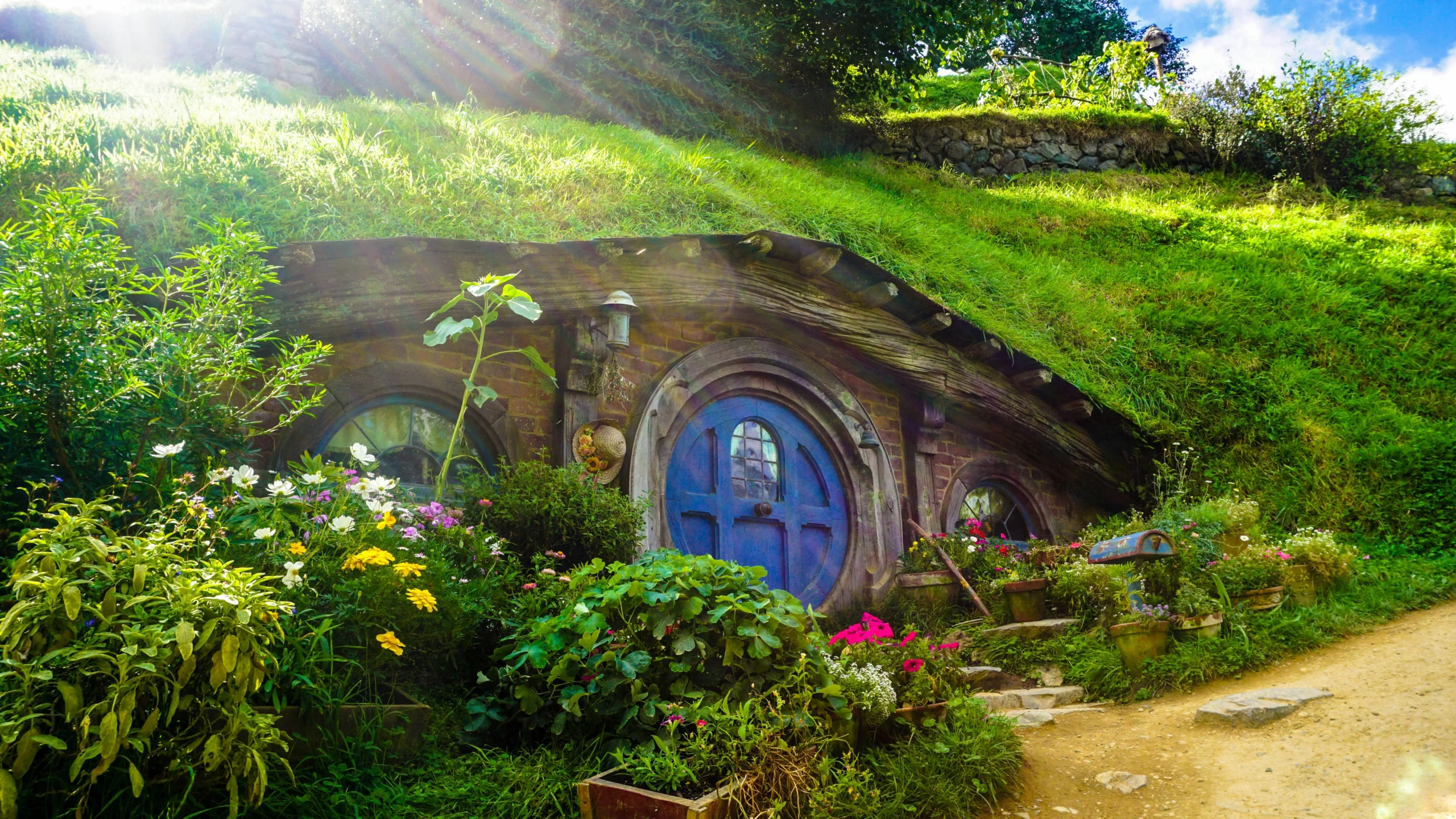
The Ultimate Video Editing Desk Setup: Essentials for Every Editor
Introduction
When it comes to selecting an extraordinary location for pre-wedding photography, a Hobbiton pre-wedding shoot in New Zealand is nothing short of magical. Renowned globally as the enchanting film set for The Lord of the Rings and The Hobbit trilogies, Hobbiton offers couples a whimsical backdrop like no other—perfect for capturing romance and creating timeless memories.
The Enchanting Charm of Hobbiton
Nestled amidst the rolling hills of Matamata on New Zealand’s North Island, Hobbiton embodies a fairy-tale atmosphere. Its charming Hobbit holes, lush gardens, vibrant flowers, quaint pathways, and rustic charm instantly transport visitors into a fantasy world, creating an unmatched setting for romantic photographs.
Unique Photographic Opportunities
Iconic Hobbit Holes
Imagine your pre-wedding shots set against the quaint, colorful doors and windows of Hobbiton’s iconic Hobbit homes. These charming dwellings provide endless opportunities for whimsical and romantic imagery.
The Green Dragon Inn
This delightful, rustic inn is an ideal spot for cozy, intimate shots. Its timeless interiors and picturesque surroundings add authenticity and warmth to your photographs.
Party Tree and Gardens
The majestic Party Tree and beautifully landscaped gardens provide stunning natural backdrops, perfect for romantic portraits and candid shots capturing spontaneous joy and love.
The Magic of the Golden Hour
At Hobbiton, the natural lighting during sunrise and sunset (the “golden hours”) offers breathtaking photographic conditions. The soft, golden glow during these times enhances the romantic and dreamy ambiance, creating strikingly beautiful images that couples cherish forever.
Convenience and Accessibility
Hobbiton is highly accessible, with regular guided tours and professional services available to assist with photography sessions. Its proximity to major New Zealand cities such as Auckland and Rotorua makes it a convenient destination for both local and international couples.
Enhancing Your Pre-Wedding Experience
Incorporating Hobbiton into your pre-wedding photoshoot adds adventure and a unique storytelling element to your love story. Couples can dress in vintage, rustic, or fairy-tale-themed attire, complementing Hobbiton’s whimsical aesthetic and creating truly distinctive photographic memories.

We Can Help You With Professional Video Editing.
Unlimited Revisions – Whatever changes are needed, send them through and we will Fix them.
Fast Turnaround Time – We are always available to meet the tightest of deadlines when necessary.
Risk-Free Trial – Send your first video editing project to us and if you are not 100% happy with the results we produce, you don’t pay!
Real Couples, Real Stories
Countless couples have shared their magical experiences at Hobbiton:
- “Our pre-wedding photos at Hobbiton were absolutely magical. The location itself added such charm and joy to our photographs, making them genuinely unforgettable.” – Mia and Ben
- “The natural beauty and enchanting ambiance of Hobbiton exceeded all our expectations. Our photos perfectly capture our love story within this extraordinary setting.” – Lily and James
Tips for a Perfect Hobbiton Pre-Wedding Shoot
- Book your photoshoot in advance due to high demand.
- Plan your session around early morning or late afternoon to utilize the golden hour.
- Work with photographers familiar with Hobbiton to maximize your photoshoot experience.
Frequently Asked Questions (FAQs)
- Is permission needed for photography at Hobbiton?
Yes, pre-booked professional photography sessions typically require special permission from Hobbiton management. - When is the best time to visit Hobbiton for photos?
Early morning or late afternoon sessions during spring or summer months offer ideal lighting and lush landscapes. - How much time should we allocate for a photoshoot?
Allocate around 2-4 hours for a thorough and relaxed photoshoot.
Conclusion and Call to Action
Choosing Hobbiton as your pre-wedding photoshoot location ensures a memorable, magical experience filled with romance, adventure, and enchanting imagery. Begin your journey toward capturing your dream pre-wedding photographs at Hobbiton today and create timeless memories to treasure for a lifetime.
Why You Should Outsource Wedding Video Editing: Save Time & Get Pro Results
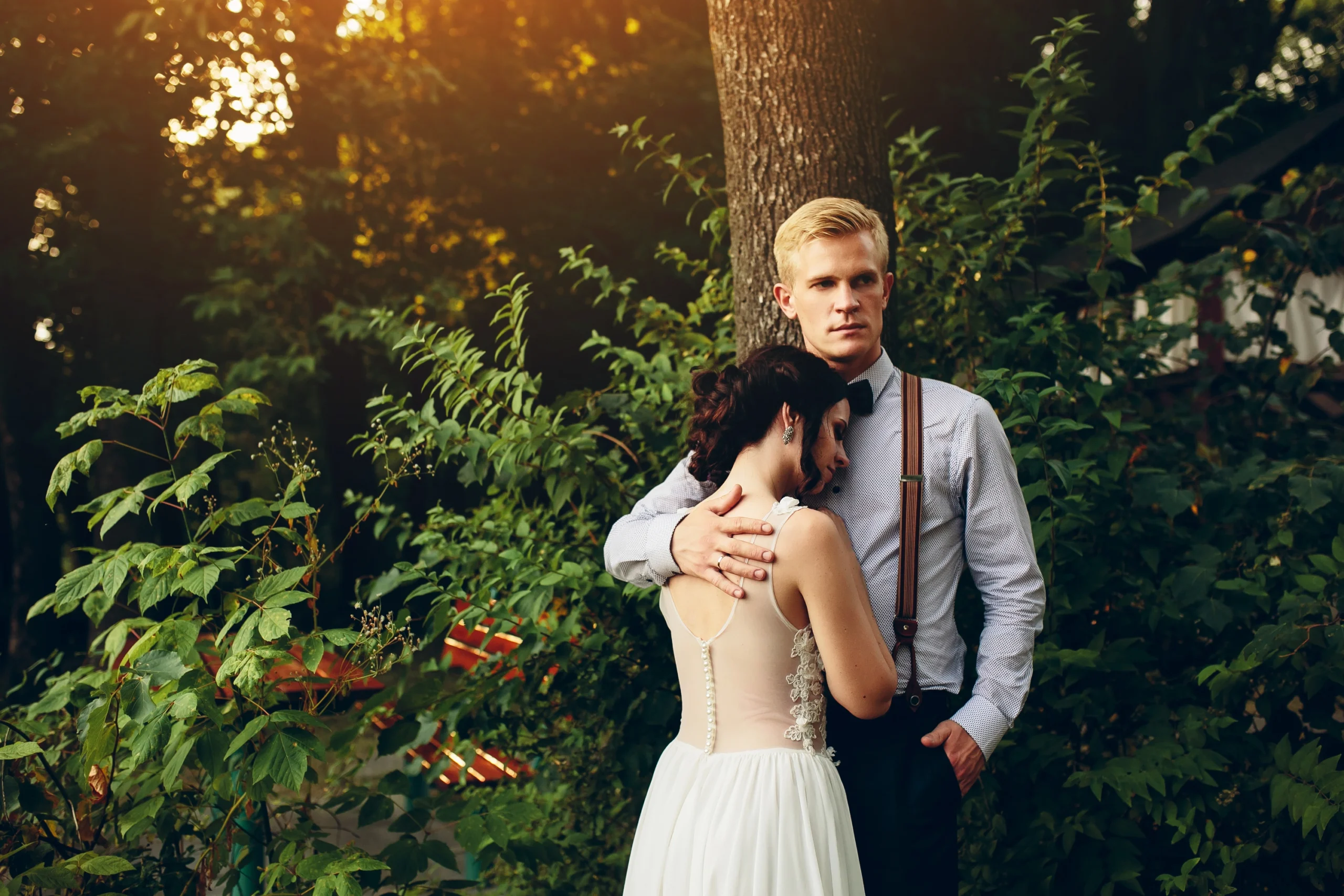
The Ultimate Video Editing Desk Setup: Essentials for Every Editor
Introduction
Wedding videography is a rapidly expanding industry, capturing unforgettable moments and preserving them forever. However, capturing the footage is just one part of the equation. The extensive and intricate video editing process is what truly transforms raw footage into memorable stories. For many videographers, the best strategic move is to outsource wedding video editing. By choosing to outsource wedding video projects, they can save significant time, maintain consistency, and achieve professional-level results that enhance their reputation and grow their business.
Understanding the Wedding Video Editing Process
The process of editing a wedding video involves multiple detailed stages, including sorting through hours of raw footage, selecting the perfect shots, color grading, sound mixing, adding special effects, transitions, and producing a cohesive narrative. This detailed post-production phase demands considerable time, skill, and attention to detail, often challenging videographers balancing numerous projects simultaneously.
Common Challenges Faced by Wedding Videographers
Wedding videographers frequently encounter challenges such as time management, consistency in video quality, and keeping up with evolving editing techniques. The stress of meeting tight deadlines and the complexities of mastering professional-level editing software can significantly impact productivity and creative output, ultimately affecting client satisfaction and business reputation.
Key Benefits of Outsourcing Wedding Video Editing
Time Efficiency
Outsourcing wedding video editing frees significant time, allowing videographers to concentrate on capturing more weddings and improving client relationships. This strategic shift enhances business productivity and profitability.
Cost Savings
Maintaining an in-house editing team involves substantial overhead costs, including salaries, software licenses, and workspace expenses. Outsourcing provides a more economical and predictable budgeting approach, eliminating unnecessary expenditures.
Consistent Professional Quality
Outsourced editing services like Cut Pro Media employ seasoned editors specializing in wedding videos. This ensures every project meets high industry standards and client expectations, delivering consistently outstanding results.

We Can Help You With Professional Video Editing.
Unlimited Revisions – Whatever changes are needed, send them through and we will Fix them.
Fast Turnaround Time – We are always available to meet the tightest of deadlines when necessary.
Risk-Free Trial – Send your first video editing project to us and if you are not 100% happy with the results we produce, you don’t pay!
Key Benefits of Outsourcing Wedding Video Editing
Time Efficiency
Outsourcing wedding video editing frees significant time, allowing videographers to concentrate on capturing more weddings and improving client relationships. This strategic shift enhances business productivity and profitability.
Cost Savings
Maintaining an in-house editing team involves substantial overhead costs, including salaries, software licenses, and workspace expenses. Outsourcing provides a more economical and predictable budgeting approach, eliminating unnecessary expenditures.
Consistent Professional Quality
Outsourced editing services like Cut Pro Media employ seasoned editors specializing in wedding videos. This ensures every project meets high industry standards and client expectations, delivering consistently outstanding results.
Scalability
As businesses grow, the workload often multiplies rapidly. Outsourcing allows videographers to handle increased demand smoothly, effortlessly scaling their business without compromising quality or customer satisfaction.
Why Choose a Specialized Wedding Video Editing Service?
Selecting a specialized wedding video editing service ensures that editors possess detailed knowledge of wedding-specific requirements and nuances. This expertise includes storytelling techniques, emotional pacing, stylistic editing, and an understanding of what clients genuinely treasure in their wedding videos. Moreover, specialized editors seamlessly integrate into existing workflows, enhancing business efficiency.
How to Choose the Right Outsourcing Partner
When selecting an outsourcing partner, consider essential factors such as industry reputation, verified client reviews, clearly outlined pricing structures, consistent turnaround times, and effective communication channels. Cut Pro Media, for example, excels in all these areas, providing transparent pricing, responsive communication, and high-quality, timely deliveries that match the specific needs of wedding videographers.
Real-world Success Stories & Testimonials
Many wedding videographers have dramatically benefited from outsourcing. Testimonials reflect transformative business results:
- “Outsourcing to Cut Pro Media allowed me to focus entirely on filming and client management. The quality of their edits consistently impresses my clients.” – Lucas, Wedding Videographer
- “Since outsourcing, our delivery times have improved drastically, and we’ve expanded our client base significantly.” – Emma, Professional Wedding Videographer
Frequently Asked Questions (FAQs) about Outsourcing
- How secure is outsourcing video editing?
Reputable companies like Cut Pro Media prioritize data security, ensuring all footage remains confidential and secure. - What is the typical turnaround time?
Quality outsourcing services often provide flexible, reliable turnaround times clearly agreed upon beforehand. - Can I maintain creative control when outsourcing?
Absolutely. Outsourcing doesn’t diminish creative control; rather, it enhances collaboration, allowing editors to bring your vision to life accurately.
Conclusion
Outsourcing wedding video editing is a strategic choice for any videographer seeking to save time, reduce operational costs, achieve consistent high-quality results, and scale their business efficiently. Make the professional choice today and partner with Cut Pro Media. Elevate your wedding videography business—start outsourcing your editing tasks and experience the transformative benefits immediately.
The Ultimate Video Editing Desk Setup: Essentials for Every Editor
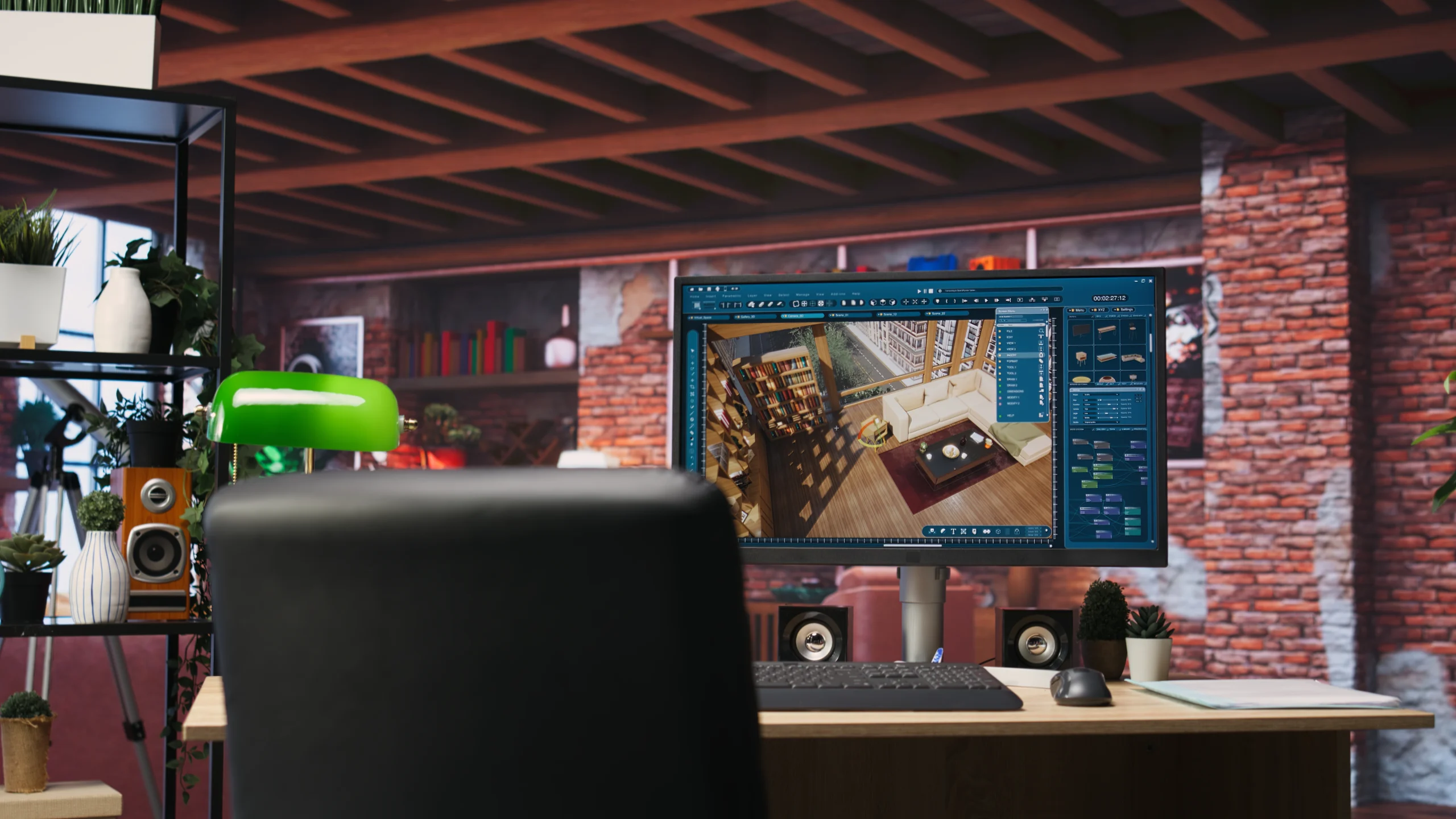
The Ultimate Video Editing Desk Setup: Essentials for Every Editor
Introduction
Creating a professional video editing desk setup is crucial for every editor, especially those working long hours crafting captivating videos. A well-designed workspace not only enhances productivity but also significantly improves comfort and reduces fatigue. Optimising their desk setup is a strategic step toward producing consistently high-quality content.
Why a Great Editing Desk Setup Matters
Your environment directly impacts your productivity and creativity. An efficient workspace boosts workflow, minimizes physical strain, and encourages creative thinking. Professional editors often face tight deadlines, especially in competitive markets like the USA, UK, Australia, and New Zealand, where speed and quality are essential. Investing in a high-quality editing setup can significantly enhance your performance, efficiency, and overall job satisfaction.
Essential Desk Components
Ergonomic Desk
Choosing the right desk is foundational. Adjustable standing desks offer the flexibility needed for long editing sessions, reducing back strain and promoting better posture. Popular choices include electric sit-stand desks that provide seamless transitions.
Ergonomic Chair
A high-quality ergonomic chair ensures comfort and reduces the risk of posture-related issues. Look for chairs with adjustable lumbar support, seat height, and armrests designed specifically for extended periods of sitting.
Proper Lighting
Effective lighting reduces eye strain and increases accuracy in color grading. Adjustable lamps and bias lighting placed behind monitors are ideal for maintaining consistent lighting conditions and minimizing screen glare.
Core Hardware Every Editor Needs
High-Resolution Monitors
Accurate color representation and sufficient workspace enhance editing precision. Editors often benefit from dual-monitor setups or ultrawide screens, increasing productivity and workflow speed.
Computers and Storage Solutions
The ongoing Mac versus PC debate hinges on preference and software compatibility. High-speed SSD storage, NAS systems, or external drives are essential for handling large video files efficiently.
Professional Audio Equipment
Quality audio is vital. Professional headphones and studio monitors provide editors with accurate audio monitoring, essential for precise audio editing and mixing.
Essential Editing Accessories
Specialized Keyboards and Controllers
Video editing-specific keyboards and controllers such as Shuttle Pro or Stream Deck significantly streamline workflow, saving valuable time during editing.
Graphics Tablets and Precision Mouse
Graphics tablets improve precision for intricate edits, while ergonomic mice reduce wrist strain. These tools are invaluable for detailed editing tasks.
Cable Management Solutions
Cable organizers, clamps, and sleeves maintain a clutter-free workspace, enhancing productivity and aesthetics.
Optimizing Your Editing Workspace for Productivity
Efficient workspace organization includes ergonomic alignment, systematic arrangement of editing tools, and incorporating productivity software like task management and editing presets to streamline the workflow.

We Can Help You With Professional Video Editing.
Unlimited Revisions – Whatever changes are needed, send them through and we will Fix them.
Fast Turnaround Time – We are always available to meet the tightest of deadlines when necessary.
Risk-Free Trial – Send your first video editing project to us and if you are not 100% happy with the results we produce, you don’t pay!
Advantages of Outsourcing Video Editing
Outsourcing editing work significantly benefits professional videographers. Companies like Cut Pro Media offer specialized editing services, allowing videographers in the USA, UK, Australia, and New Zealand to focus on shooting and client relations. Benefits include faster project turnaround, cost savings, scalability, and consistently high-quality editing.
Testimonials and Real-World Examples
Clients worldwide praise Cut Pro Media’s professionalism:
- “Cut Pro Media revolutionized my workflow. My productivity doubled, and I now focus more on shooting.” – Emily, Professional Videographer (USA)
- “The consistent quality of edits allowed us to scale quickly without sacrificing quality.” – Alex, Wedding Videographer (New Zealand)
FAQs about Setting Up a Video Editing Desk
- What is the ideal monitor setup for video editing?
Dual monitors or ultrawide monitors are highly recommended for efficiency and precision. - Are ergonomic chairs worth the investment?
Absolutely! Ergonomic chairs significantly reduce fatigue and prevent long-term health issues. - Why is cable management important?
Effective cable management improves workspace organization, safety, and overall productivity.
Conclusion
Outsourcing editing work significantly benefits professional videographers. Companies like Cut Pro Media offer specialized editing services, allowing videographers in the USA, UK, Australia, and New Zealand to focus on shooting and client relations. Benefits include faster project turnaround, cost savings, scalability, and consistently high-quality editing.
How to Quickly Add Cinematic Black Bars in Premiere Pro
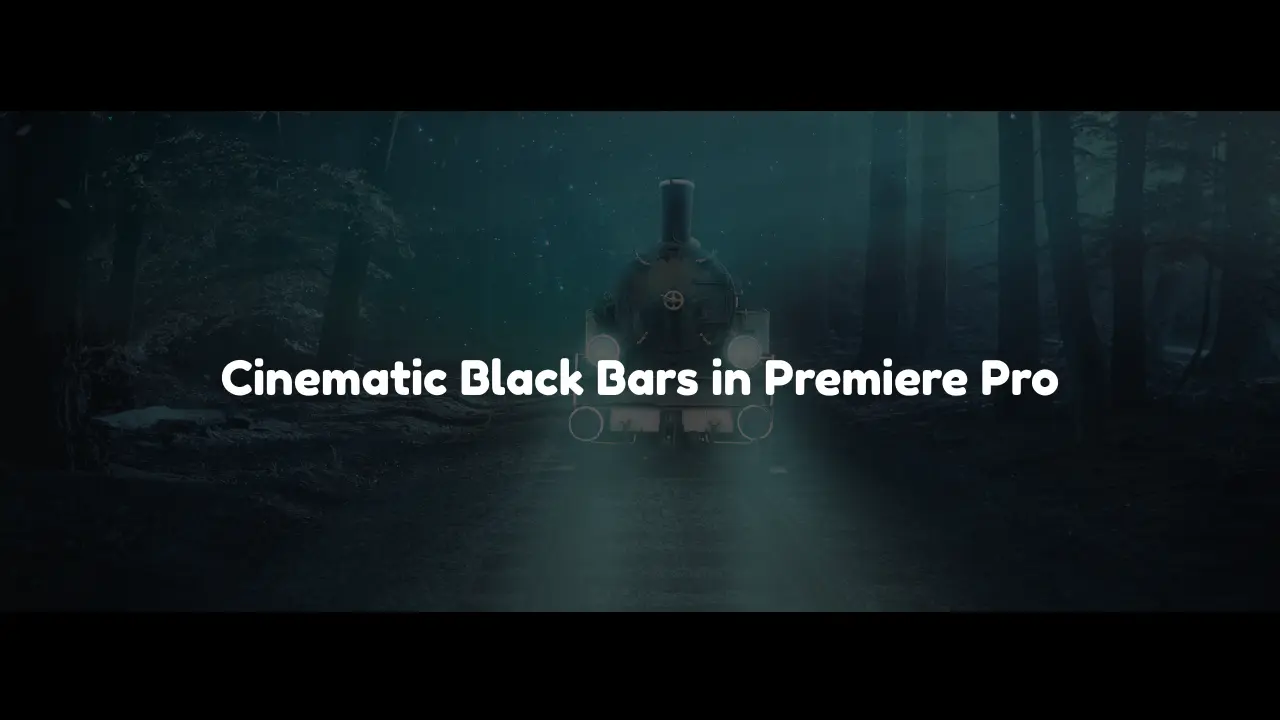
The Role of Video Editing in Building a Real Estate Videographer’s Brand
Introduction
Achieving a professional cinematic look in wedding videos or commercial productions can elevate your storytelling immensely. One of the simplest yet most effective techniques to achieve this is by adding cinematic black bars. Known as “letterboxing,” this stylistic method helps videos look instantly more polished and professional. Using cinematic black bars in Premiere Pro makes this process quick and efficient—a vital advantage for busy wedding videographers or professional editors working in a competitive industry.
What Are Cinematic Black Bars?
Cinematic black bars, also called letterboxing, are horizontal black strips at the top and bottom of a video. These bars create a wider aspect ratio (like 2.35:1), providing an authentic cinematic feel similar to major motion pictures. Historically, cinematic black bars originated from the necessity to adapt widescreen films to standard television screens, but now they’re deliberately used for artistic purposes. They direct viewers’ focus, enhance visual storytelling, and create an immersive viewing experience.
Why Use Cinematic Black Bars in Wedding Videos?
In recent years, the demand for cinematic wedding videos has skyrocketed across the USA, UK, Australia, and New Zealand. Couples now prefer films that resemble cinematic masterpieces. Cinematic black bars instantly enhance visual storytelling by creating drama, emphasizing moments, and framing key shots artistically. Professional wedding video editors utilize this simple yet effective method to distinguish their videos from competitors, making outsourcing to specialized editors highly beneficial.
Step-by-Step Guide: Adding Cinematic Black Bars Quickly in Premiere Pro
- Create a New Adjustment Layer:
- Click on the “New Item” button in the Project panel.
- Select “Adjustment Layer” and drag it above your video footage on the timeline.
- Applying the Crop Effect:
- Go to the Effects panel.
- Type “Crop” into the search bar.
- Drag the Crop effect onto your adjustment layer.
- Adjust the Crop Settings:
- Select the adjustment layer in your timeline.
- In the Effects Controls panel, adjust the “Top” and “Bottom” percentages (typically 10%-13% for a standard cinematic look).
- Customize Your Black Bars:
- Fine-tune the height by slightly increasing or decreasing the crop percentages based on preference.
- Save as Preset:
- Right-click on the Crop effect in the Effects Controls panel.
- Select “Save Preset” for future use, significantly speeding up your workflow.

We Can Help You With Professional Video Editing.
Unlimited Revisions – Whatever changes are needed, send them through and we will Fix them.
Fast Turnaround Time – We are always available to meet the tightest of deadlines when necessary.
Risk-Free Trial – Send your first video editing project to us and if you are not 100% happy with the results we produce, you don’t pay!
Common Mistakes When Adding Cinematic Black Bars
- Inconsistent Aspect Ratios: Ensure all clips match the same aspect ratio to avoid distracting visual jumps.
- Incorrect Cropping: Avoid over-cropping essential visual elements by carefully reviewing each shot.
- Export Settings Errors: Always verify your export aspect ratio to ensure black bars appear correctly.
Benefits of Outsourcing Your Wedding Video Editing
Outsourcing video editing, especially in busy markets like the USA, UK, Australia, and New Zealand, significantly boosts productivity and quality. Professional outsourced editing services like Cut Pro Media offer advantages such as:
- Time Efficiency: Faster turnarounds on edits, allowing videographers to accept more projects.
- Cost-Effective: Reduce overhead costs by eliminating in-house editing setups.
- Quality Assurance: Consistently high-quality edits through expert and experienced editors.
Case Studies/Testimonials from Cut Pro Media
At Cut Pro Media, we proudly support wedding videographers and photographers globally. Our clients in the USA, UK, Australia, and New Zealand have shared transformative stories:
- “Outsourcing our edits to Cut Pro Media helped us double our bookings in one wedding season!” – Sarah, Wedding Videographer (Australia)
- “Their editors know exactly what our market expects, making our videos stand out every time.” – Mark, Professional Videographer (UK)
Frequently Asked Questions (FAQs)
- How do I quickly add cinematic bars in Premiere Pro?
Follow the steps provided above, using adjustment layers and crop effects. - What’s the best outsourced video editing company for weddings?
Cut Pro Media is highly recommended, specializing in wedding video editing tailored for professionals. - Can I customize the size of cinematic bars?
Absolutely! Adjust the crop percentages to your desired effect.
Final Thoughts
Cinematic black bars are a quick, powerful way to enhance your wedding and commercial video projects, giving them the professional polish clients crave. Consider outsourcing your wedding video editing to Cut Pro Media and elevate your business effortlessly. Connect with our team today and start scaling your video production business with ease and professionalism.
The Role of Video Editing in Building a Real Estate Videographer’s Brand
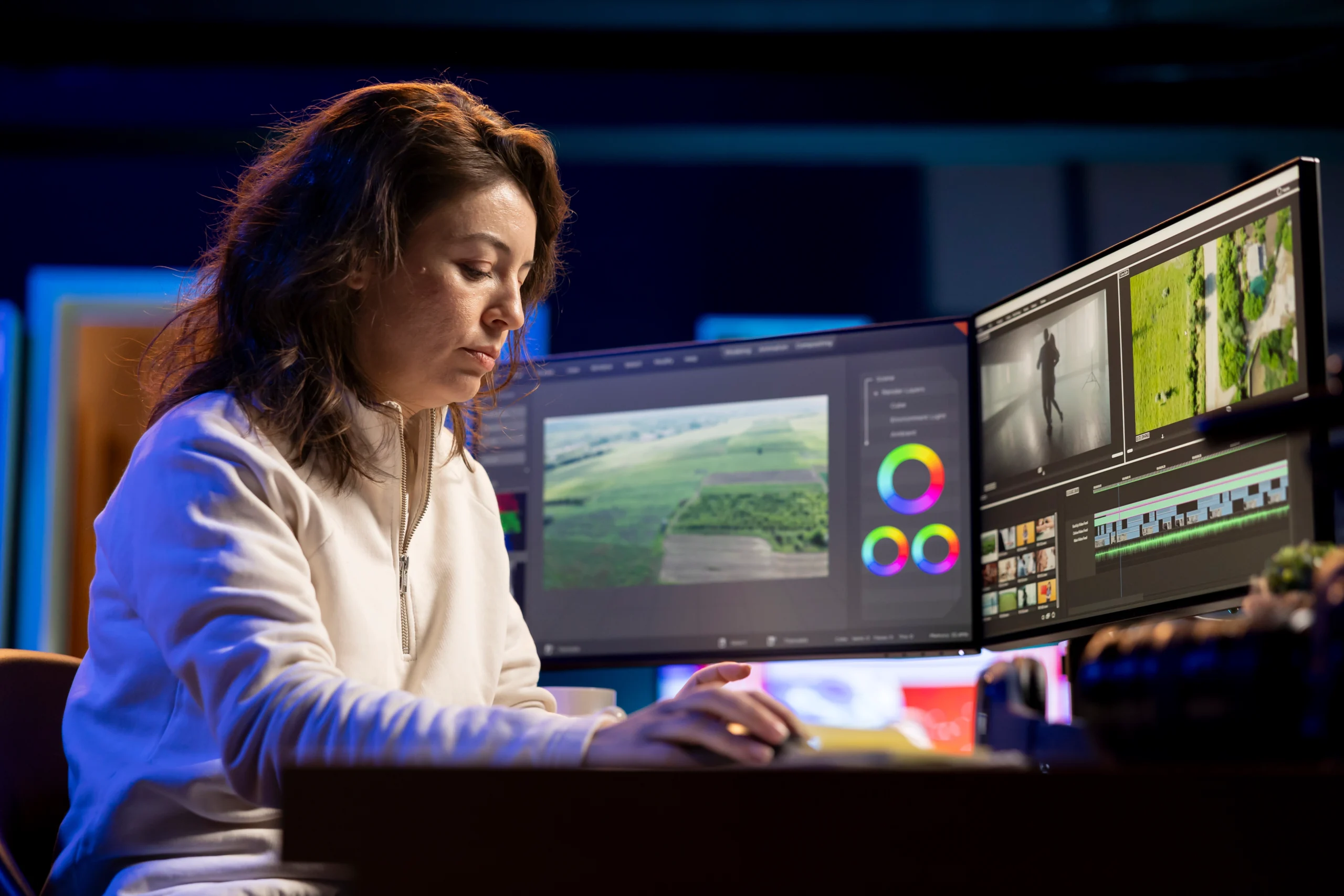
The Role of Video Editing in Building a Real Estate Videographer’s Brand
In today’s competitive property market, real estate agents and developers understand the power of video to sell homes, land, and commercial spaces. But what separates a standard property walkthrough from a high-converting listing is professional video editing for real estate videographers.
For professional real estate videographers, editing isn’t just about polishing footage—it’s about defining your style, strengthening your identity, and building a brand that attracts high-end clients. At Cut Pro Media, we help real estate videographers worldwide turn raw footage into cinematic marketing tools that not only sell homes but also build reputations.
In this post, we’ll break down the vital role that video editing plays in shaping your brand as a real estate videographer—and how outsourcing your edits can help you scale with consistency and confidence.
Why Branding Matters in Real Estate Videography
Whether you shoot for independent agents, luxury developers, or real estate agencies, your clients aren’t just buying a service—they’re hiring you for your vision, reliability, and signature style. A strong brand helps you:
- Stand out in a crowded market
- Attract premium clients and long-term contracts
- Charge higher rates
- Gain referrals based on consistent quality
- Build authority in your niche
And it all starts with how your work looks and feels—your editing is your fingerprint.
1. Editing Defines Your Visual Style
Your choice of pacing, transitions, color grading, and music influences how your audience perceives your work. A consistent editing style helps agents and buyers instantly recognize your videos.
Do you specialize in:
- High-energy edits for urban apartments?
- Smooth cinematic walkthroughs for luxury listings?
- Drone-focused highlight reels for resorts and estates?
Your editing sets the tone and speaks to your target market—before you ever say a word.
2. Consistency Builds Trust
When clients see that your edits are consistently clean, high-quality, and delivered on time, they’re more likely to trust you for future projects.
Consistent video editing communicates:
- Professionalism
- Reliability
- A results-driven mindset
In real estate, agents move fast—so when they know they can rely on your editing turnaround and style, you become a preferred vendor.
3. Editing Highlights What Sells
In real estate, video editing isn’t just visual—it’s strategic. Good editing guides the viewer’s eye and emphasizes features that convert.
Examples include:
- Emphasizing natural light with color correction
- Highlighting room transitions with smooth pans
- Using cutaways to showcase materials and finishes
- Matching music tempo to property ambiance
- Adding agent voiceovers or callouts for value points
With professional editing, a simple room becomes a lifestyle experience—and that helps your client sell faster and for more.
4. Branded Editing Sets You Apart
Custom motion graphics, branded intros/outros, and on-screen callouts make your work more memorable and give clients added value.
What branded editing can include:
- Logo animations
- Lower thirds for agent contact details
- Property feature overlays (e.g., “4 Bed | 3 Bath | 2,500 sq ft”)
- Custom transitions and thumbnail templates
When every video is tailored and branded, clients see you as a strategic partner, not just a camera operator.
5. Outsourced Editing = Consistency at Scale
As your business grows, keeping up with editing while managing shoots and clients can be overwhelming. That’s why many top-performing real estate videographers choose to outsource editing—without compromising their brand.
At Cut Pro Media, we help you:
- Maintain a consistent editing style across all projects
- Scale your business during high-demand periods
- Deliver fast without sacrificing polish
- Focus on shooting and client relationships
- Expand your brand reach with high-quality videos
Our editing team works as an extension of your brand—learning your style, applying your color preferences, and ensuring your videos always feel like yours.

We Can Help You With Professional Video Editing.
Unlimited Revisions – Whatever changes are needed, send them through and we will Fix them.
Fast Turnaround Time – We are always available to meet the tightest of deadlines when necessary.
Risk-Free Trial – Send your first video editing project to us and if you are not 100% happy with the results we produce, you don’t pay!
6. Faster Turnaround Helps Agents Win Listings
In a competitive real estate market, time matters. Agents often need property videos within 24–72 hours to meet listing deadlines.
When you outsource to Cut Pro Media:
- We handle the post-production
- You shoot more listings
- You deliver videos faster
- Your clients stay happy—and come back for more
Fast, reliable delivery enhances your brand reputation and puts you ahead of other videographers who can’t keep up.
7. Better Videos = More Exposure for Your Brand
A polished, well-edited real estate video doesn’t just help your client—it helps you.
Your branded videos often get:
- Shared on agent websites and portals
- Boosted in paid social media campaigns
- Sent to buyer databases
- Posted to YouTube or property channels
Each view becomes exposure for your business. The better your editing, the more likely someone will ask: “Who shot this?”
How Cut Pro Media Supports Real Estate Videographers
We specialize in outsourced video editing for real estate professionals, offering:
- Property walkthrough editing
- Drone video assembly and stabilization
- Branded motion graphics and overlays
- Audio cleanup and voiceover sync
- Color correction to enhance natural light
- Exporting in agent-ready formats for MLS and social media
We work with videographers across the USA, Australia, New Zealand, and beyond—delivering high-quality, white-label editing that fits your workflow and brand style.
Getting Started Is Easy
- Upload your footage via Dropbox, Google Drive, or our secure portal
- Share your editing brief—music, branding, pace, color style
- We edit, you review, and we revise if needed
- Final video delivered, ready for MLS, YouTube, Instagram, or direct client handoff
Whether you’re managing 2 listings a month or 20 a week, we’ll help you keep up without falling behind.
Final Thoughts
Your editing style is one of the most powerful tools in building a successful real estate videography brand. It’s what clients remember, what viewers respond to, and what helps you scale your business without losing your edge.
With Cut Pro Media as your post-production partner, you can stay focused on filming, growing, and delivering the polished, cinematic videos that make your brand shine.
Ready to elevate your real estate videography brand?
Visit www.cutpromedia.com to explore our outsourced editing services for real estate creatives.
Edit faster. Brand stronger. Grow smarter—with Cut Pro Media.
Cinematic Wedding Videos: What They Are and How to Create Them with the Best Outsourcing Service in the USA
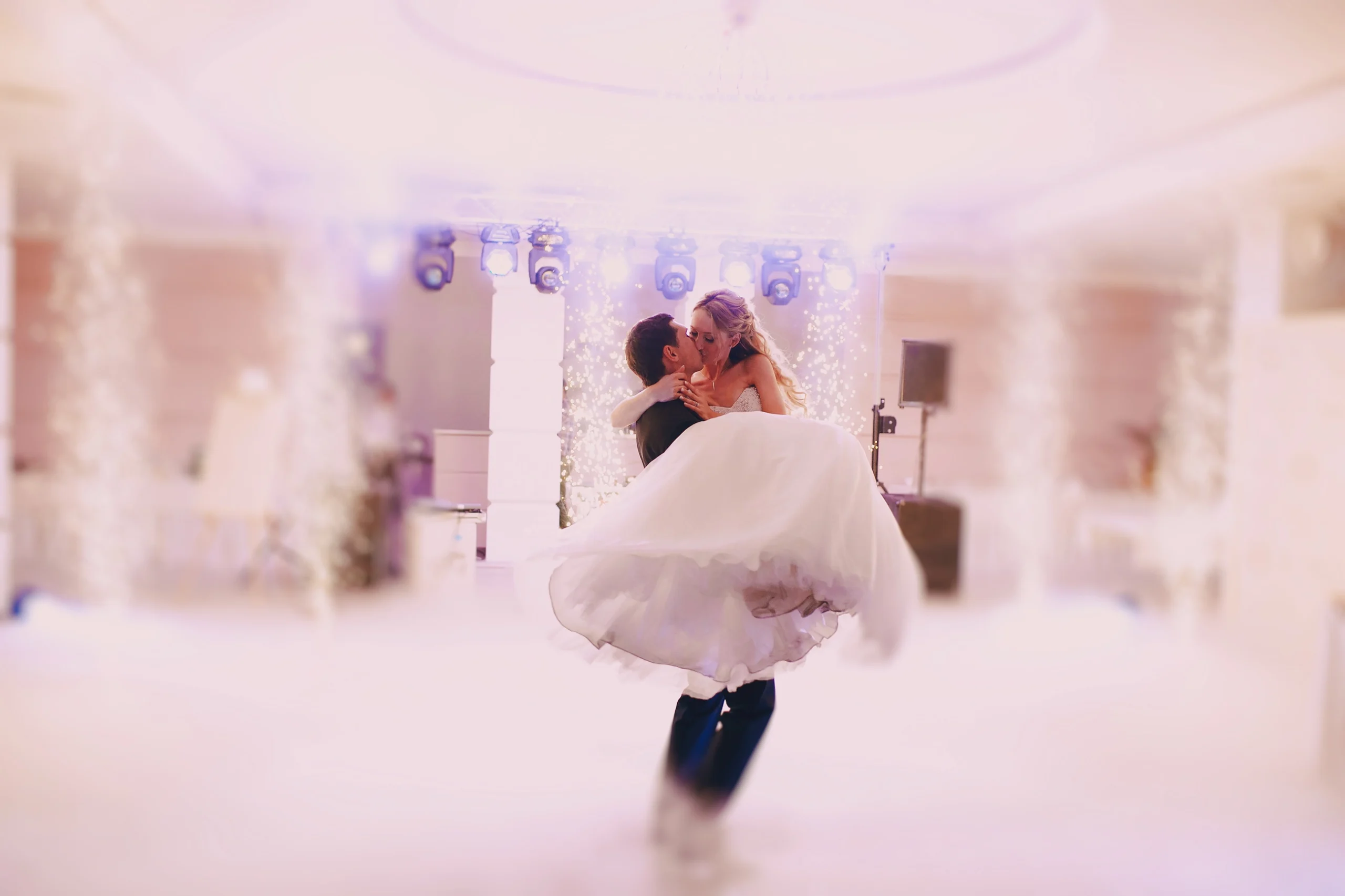
Cinematic Wedding Videos: What They Are and How to Create Them with the Best Outsourcing Service in the USA
In today’s wedding industry, couples don’t just want a record of their day—they want a film. A cinematic wedding video is no longer a luxury; it’s an expectation. With its artful storytelling, emotional pacing, and film-like quality, cinematic wedding videography has become the gold standard for modern wedding filmmakers across the USA.
But creating these kinds of videos takes time, precision, and creative energy—especially in post-production. That’s why so many wedding videographers now turn to outsourced editing services to bring their footage to life without the stress of late-night edits or falling behind during peak season.
In this guide, we’ll explain what cinematic wedding videos are, the key elements that define them, and how to produce them with the help of Cut Pro Media—the USA’s trusted outsourcing partner for wedding video editing.
What Is a Cinematic Wedding Video?
A cinematic wedding video is more than a highlight reel—it’s a carefully crafted story that combines emotional moments, audio, music, and visuals to evoke the feeling of a short film. These videos typically feature:
- Intentional storytelling and pacing
- Artistic camera angles and movement
- High-quality audio and voiceovers
- Color grading for mood and tone
- Music that complements the emotion of the day
- Seamless editing and transitions
- A clear narrative (not just a chronological montage)
It’s not about capturing everything—it’s about capturing the right moments, and telling a story that feels timeless and emotionally impactful.
Why Cinematic Wedding Videos Are in High Demand
Couples today are deeply influenced by social media, YouTube, and modern filmmaking trends. They want their love story told in a way that feels:
- Authentic but polished
- Emotional but elegant
- Real but artfully enhanced
As a result, more videographers are expected to deliver Hollywood-level quality on a tight schedule and with limited team support. That’s where strategic outsourcing becomes a game-changer.
The Post-Production Challenges of Cinematic Editing
Creating cinematic wedding videos involves hours (sometimes days) of editing:
- Reviewing and selecting key emotional moments
- Syncing multiple camera angles
- Enhancing audio and removing background noise
- Grading footage to match lighting conditions
- Adding slow-motion effects, fades, transitions
- Integrating music with natural audio and vows
- Exporting in multiple formats for clients and social platforms
Without support, even the most experienced filmmakers can burn out. That’s why many choose to outsource—and why Cut Pro Media is the preferred choice in the USA.
How Cut Pro Media Helps You Create Cinematic Wedding Videos
At Cut Pro Media, we specialize in professional wedding video editing services designed to help you deliver cinematic results at scale—without sacrificing your creative vision.
Here’s how we support wedding filmmakers:
1. Expert Storytelling and Emotional Pacing
Our editors understand the art of building a story. We focus on:
- Emotional arcs
- Well-timed music transitions
- Layering voiceovers and vows
- Creating seamless flows that feel natural and cinematic
You submit the footage, and we shape it into a narrative your clients will cherish forever.
2. High-End Color Grading and Sound Design
Cinematic style demands polished visuals and clean, immersive audio. We provide:
- Custom LUTs or match your preferred grading style
- Balanced audio levels with vocal clarity
- Background noise reduction and ambience layering
- Seamless sound transitions
3. Your Style, Your Brand
Whether you prefer warm, romantic tones or sharp, dramatic edits—we edit to match your signature style.
We offer:
- One-on-one onboarding
- Brand and style sheets
- Dedicated editors for recurring clients
4. Fast, Reliable Turnaround
We know deadlines matter. Our workflow is optimized for:
- 48–72 hour turnaround for highlight videos
- Quick revisions
- Priority delivery for urgent edits
5. Secure, Scalable Workflow
All footage is handled securely through cloud sharing platforms, and we maintain:
- Confidentiality (white-label ready)
- Organized revision tracking
- Flexible capacity to handle high-volume demands during peak seasons

We Can Help You With Professional Video Editing.
Unlimited Revisions – Whatever changes are needed, send them through and we will Fix them.
Fast Turnaround Time – We are always available to meet the tightest of deadlines when necessary.
Risk-Free Trial – Send your first video editing project to us and if you are not 100% happy with the results we produce, you don’t pay!
Why Wedding Videographers in the USA Choose Cut Pro Media
We’ve worked with studios and independent filmmakers in cities across the USA—including Los Angeles, New York, Dallas, Atlanta, and Miami. They trust Cut Pro Media because:
- We specialize in weddings—nothing else
- We understand emotional editing, not just technical cuts
- We communicate clearly and consistently
- We adapt to your evolving needs
- We help you stay on schedule and scale your business
Whether you’re shooting 10 weddings a year or 100, we help you grow without burning out.
How to Get Started with Cut Pro Media
- Upload Your Footage
Send us your files via Google Drive, Dropbox, or any cloud platform. - Share Your Vision
Let us know your editing style, music preferences, and desired video length. - Review & Revise
We deliver a polished draft. You review and request changes—we finalize. - Deliver to Your Clients
On time, on brand, and beautifully cinematic.
We offer flexible pricing for solo filmmakers and volume discounts for studios.
Final Thoughts
Cinematic wedding videos are in demand—and delivering them consistently means having the right systems and support in place. With Cut Pro Media, you get a post-production partner that understands the heart of wedding storytelling and helps you deliver breathtaking films without the editing overload.
Ready to take your wedding videos to a cinematic level—without editing them all yourself?
Visit www.cutpromedia.com and let our expert editors transform your raw footage into emotional, film-quality wedding stories.
Shoot beautifully. Edit stress-free. Deliver unforgettable films—with Cut Pro Media.
The Benefits of Outsourced Wedding Video Editing: Why New Zealand Creatives Trust Uncut Gems for Post-Production Excellence
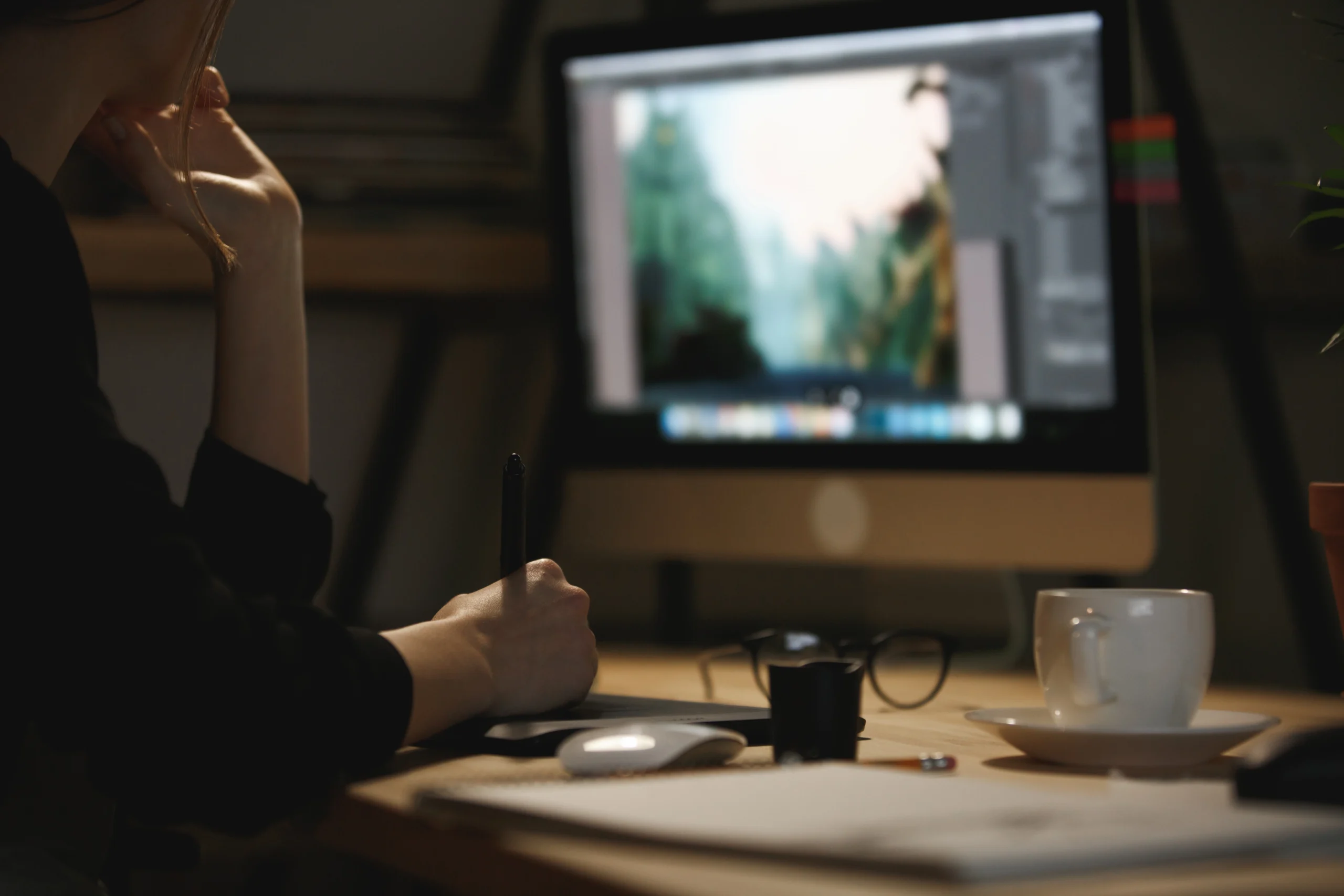
The Benefits of Outsourced Wedding Video Editing: Why New Zealand Creatives Trust Cut Pro Media for Post-Production Excellence
Wedding filmmakers in New Zealand are no strangers to long shoot days, tight turnaround deadlines, and endless hours spent in the editing suite. As the demand for cinematic wedding films continues to grow, more creatives are turning to outsourced wedding video editing New Zealand to stay competitive, reduce stress, and scale their businesses.
At Cut Pro Media, we’ve become the trusted post-production partner for wedding videographers across New Zealand—offering expert editing services that bring your vision to life without the time drain. In this post, we’ll explore the top benefits of outsourcing your wedding video editing and explain why New Zealand creatives are increasingly choosing Cut Pro Media for dependable, high-quality post-production.
The Pressure on Wedding Videographers Today
From Auckland to Queenstown, the wedding industry in New Zealand is thriving. Couples want more than just documentation—they want emotion, storytelling, and cinematic quality. But as a wedding videographer, you’re expected to:
- Shoot all-day events with multiple cameras
- Manage audio, lighting, and logistics
- Deliver highlights, teasers, and full-length edits quickly
- Communicate with clients, plan future shoots, and grow your business
Post-production often becomes the bottleneck. That’s where outsourcing makes all the difference.
Why Outsourcing Wedding Video Editing Works
1. Faster Turnaround Times for Happy Clients
Your clients are excited to see their wedding video. Waiting weeks—or even months—for delivery can dampen their experience. Outsourcing allows you to:
- Deliver faster without compromising quality
- Share teaser videos within days of the wedding
- Handle more bookings without backlog
At Cut Pro Media, our editors work in shifts to meet your deadlines—even during peak season.
2. Free Up Your Time to Focus on Filming and Growth
You didn’t become a filmmaker to spend your nights syncing footage, sorting audio, and tweaking transitions.
Outsourcing gives you back the hours spent on:
- Organizing timelines
- Color grading
- Exporting and revising
- Troubleshooting software
With that time, you can shoot more weddings, improve your craft, or finally take that weekend off.
3. Professional Editing, Consistently On-Brand
Your brand is everything. Whether you favor moody, romantic tones or light, joyful edits, consistency is key.
Our editors at Cut Pro Media work closely with you to:
- Match your editing style and branding
- Use your preferred LUTs, pacing, and music styles
- Deliver videos that feel like they were edited in-house
We ensure that your creative voice remains the center of every project.
4. Stress-Free Peak Season Support
New Zealand’s wedding season is short and intense. One month you’re managing, the next you’re overwhelmed with footage.
Cut Pro Media helps you stay on top of demand by:
- Scaling with your workload
- Handling multiple weddings simultaneously
- Prioritizing urgent deliveries when needed
You won’t have to turn down bookings—or lose sleep trying to meet deadlines.

We Can Help You With Professional Video Editing.
Unlimited Revisions – Whatever changes are needed, send them through and we will Fix them.
Fast Turnaround Time – We are always available to meet the tightest of deadlines when necessary.
Risk-Free Trial – Send your first video editing project to us and if you are not 100% happy with the results we produce, you don’t pay!
5. Access to a Skilled Team of Editors
Our team is made up of experienced wedding editors trained in:
- Multi-cam editing
- Creative storytelling
- Audio sync and cleanup
- Cinematic transitions and pacing
- Drone and B-roll integration
- Exporting for social, web, and full-resolution delivery
You don’t just get one editor—you get a professional post-production team behind you.
6. Flexible, Affordable Packages
Whether you need full-day coverage edited, a highlight reel, or just assistance with color grading, our pricing is designed for freelancers and studios alike.
We offer:
- Per-project rates
- Bulk packages for studio teams
- Monthly retainer options for consistent collaboration
This gives you flexibility without hidden costs—so you can grow your business sustainably.
Why New Zealand Creatives Choose Cut Pro Media
We’ve earned the trust of wedding filmmakers throughout New Zealand for a simple reason: we make your life easier while keeping your creative quality high.
What you get with Cut Pro Media:
- A dedicated project manager for communication
- 100% white-label service—your clients never know we exist
- Secure file sharing and backup protocols
- Revisions included in every package
- On-time delivery, every time
From the Bay of Islands to Wellington, we’ve supported creatives with everything from elopement reels to grand wedding documentaries.
Real-World Scenarios Where Outsourcing Helps
- You’re behind on editing but still booking new clients
- You want to expand your business or start a second team
- You’re feeling burned out and want to avoid creative fatigue
- You want to increase profits without increasing your workload
- You need consistent help but don’t want to hire in-house
If any of these apply to you, it’s time to outsource.
Final Thoughts
Outsourcing your wedding video editing isn’t about giving up control—it’s about gaining freedom, scale, and creative energy. With a trusted partner like Cut Pro Media, you can focus on what you do best: filming meaningful moments and building a wedding brand that thrives.
We’ve helped countless creatives in New Zealand streamline their workflow, reduce delivery time, and grow their income—without ever compromising their style.
Want to see how we can support your editing needs?
Visit www.cutpromedia.com to learn more and request a free sample edit.
Your films. Your style. Less stress—with Cut Pro Media.

